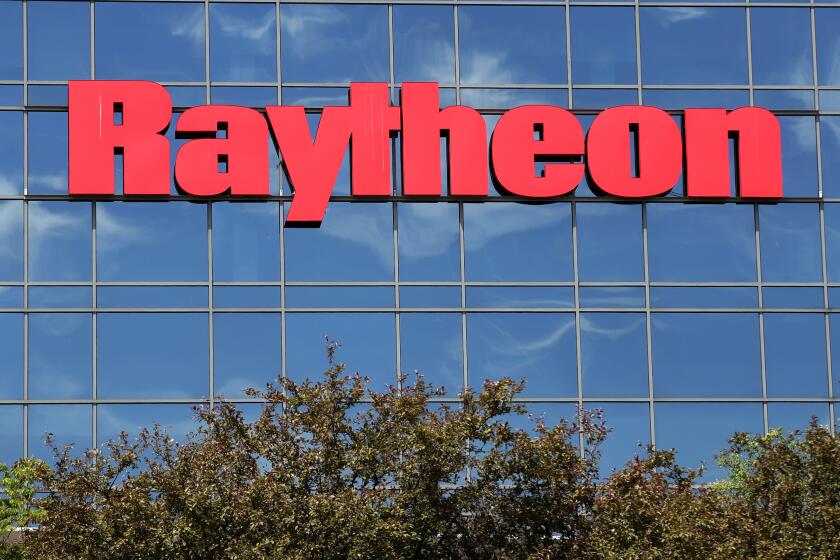What time is the Super Bowl? A question that marks Arianna Huffington’s media legacy
Reporting from New York — In 2009, an upstart liberal blog made history when it became the first Web-only publication to be allowed to ask a question at a news conference held by a president of the United States. In 2012, the website won a Pulitzer Prize.
Now, in the midst of another election cycle, the news organization is losing its namesake and the woman who has been at the core of its unlikely rise.
Arianna Huffington, whose first job in media was as founder of the Huffington Post, is resigning as editor in chief of the site. The mogul, 66, said in a letter to staff Thursday that she was leaving to work full time on Thrive Global, a wellness start-up she founded.
One reason Huffington may be stepping down is that her role at the company, and its future, are less certain, analysts say. Verizon purchased AOL, the Huffington Post’s parent company, for $4.4 billion last year.
Last month, Verizon said it would buy Yahoo Inc.’s Internet business, prompting debate about how the two news sites would interact under the same roof. Huffington had previously signed a contract that allowed her to stay at the company until 2019, but said she decided recently that she needed to spend all her time on the health start-up.
“Building something from scratch doesn’t get easier just because you’ve done it before. There is only 1 way to do it: w/ your full attention,” Huffington tweeted Thursday.
She would know.
In her 11 years at the helm of the news behemoth, Huffington and her company pioneered new strategies for attracting eyeballs on the Internet that turned the publication into one of the most visited news sites.
It was the Huffington Post that essentially invented search engine optimization, in which articles are composed in ways designed to vault them to the top of Google searches. The organization lived by A-B testing of its headlines, which pitted two different titles against each other to determine which was likely to garner the most clicks. And it was one of the first outlets to let algorithms decide which stories to promote on its homepage based on their popularity.
Those tricks helped elevate the thousands of articles produced on the site daily, which includes a mix of original reporting, opinion pieces written by unpaid contributors and scores of aggregated stories that repackaged the work of other publications.
And then the news business barreled into yet another new era. In the last several years, firms such as Facebook, Twitter and Snapchat have wrested control over content from news organizations as readers spend more time on social networks.
Readers aren’t getting their information by going to the source. They’re finding it courtesy of links that pop up on their feeds.
The Huffington Post has adapted to that new normal, consistently putting up colossal traffic numbers, and holding on to its chunk of the public that still finds its news via search results.
But in the last several years, the site has been doing more catching up than innovating, analysts say.
“What was originally so important about the Huffington Post was that it was built on assumptions about the Web that were new, because the Web was new,” said Jay Rosen, a media critic at New York University. Now, the tools that Huffington Post developed have become less cutting edge, as readers now rely on their social feeds to consume news. “In a way, Huffington Post almost became a legacy product itself.”
Readers’ changing technological preferences have left Huffington’s creation in an awkward spot. The company, analysts say, has not managed to hold the spotlight now occupied by newer, sexier outlets such as BuzzFeed — launched by Huffington Post co-founder Jonah Peretti. But it also doesn’t command the gravitas of traditional newspapers.
“It’s too old to be new, and too new to be old,” said Elgin Thompson, a technology investment banker at the New York-based Digital Capital Advisors.
Of course, the company is still a dominant force in digital media, and in a decade that has witnessed several rounds of news media autopsies, Huffington managed to hold on to her advantage.
“I think both Huffington Post’s scale and its staying power are remarkable,” wrote Ben Smith, the editor of BuzzFeed, in an email.
This is the latest twist in a long history of personal and professional transformations for Huffington.
In the 1990s, she first rose to prominence as a Republican society hostess for then-husband Michael Huffington, who served one term in Congress representing Santa Barbara County (and later ran unsuccessfully against Sen. Dianne Feinstein in 1994). The pair divorced in 1997.
She became a public figure in her own right -- penning books, writing a syndicated newspaper column and appearing regularly on TV and radio as a commentator.
Her ascendance also tracked her own political evolution. Initially a Republican, she supported Newt Gingrich and Republican presidential candidate Bob Dole, serving as the conservative counterpoint to Al Franken in a segment called “Strange Bedfellows” for Comedy Central’s show Politically Incorrect.
She became increasingly liberal, hobnobbing with Hollywood glitterati, and even ran against Arnold Schwarzenegger for governor of California in 2003. She owns a home in Brentwood.
The Huffington Post got its start in 2005 as a “group blog,” with Huffington inviting 300 big-name friends and associates contribute for a salon for the digital age. Early participants included newsman Walter Cronkite, music mogul David Geffen, playwright David Mamet and novelist Norman Mailer.
She once called blogs “the greatest breakthrough in popular journalism since Tom Paine broke onto the scene.”
Within media circles, the Huffington Post was chided for aggregating the work of other journalists, but also widely imitated as its strategy drew millions of eyeballs. The site was ahead of the curve in writing stories around the mundane questions Internet users were asking, most famously with its annual “What Time is the Super Bowl?” post. It also committed significant resources to original reporting, winning its 2012 Pulitzer Prize for a series on wounded veterans and their families.
In 2011, AOL bought the Huffington Post for $315 million in an effort to shore up its dwindling dial-up Internet business with becoming a media and advertising company. At the time, the Huffington Post had more than 24 million monthly visitors in the U.S. – about 22% of the traffic of all AOL properties combined.
Huffington was put in charge of all editorial content for AOL, which included sites such as TechCrunch.
Through it all, Huffington maintained a dizzying schedule – globetrotting around the world for appearances and parties. Then in 2007, she collapsed from exhaustion and broke her cheekbone.
That’s when she became an evangelist for getting a full night’s rest. She installed sleeping chambers at AOL — nicknamed NapQuest — and authored a book called “The Sleep Revolution: Tranforming Your Life, One Night at a Time.” She later wrote a self-help tome called “Thrive: The Third Metric to Redefining Success and Creating a Life of Well-Being, Wisdom and Wonder.”
Her new business will advise corporate clients and individuals on how to limit workplace stress.
“For far too long we have been operating under a collective delusion that burning out is the necessary price for achieving success,” Huffington said in a quote on the Thrive Global site. “This couldn’t be less true.”
ALSO
Macy’s plans to shut down 100 stores
Reality check: Manufacturers returning to U.S. may mean jobs for robots, not people
Olympics bans most brands from saying ‘Olympics’ or ‘Rio,’ even on Twitter. Snark ensues
UPDATES:
5:50 p.m.: This article was updated with staff reporting.
9:55 a.m.: This article was updated throughout with additional details.
This article was originally published at 5:50 a.m.
More to Read
Inside the business of entertainment
The Wide Shot brings you news, analysis and insights on everything from streaming wars to production — and what it all means for the future.
You may occasionally receive promotional content from the Los Angeles Times.












